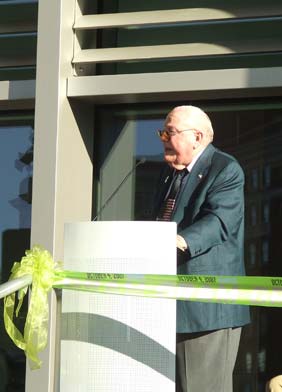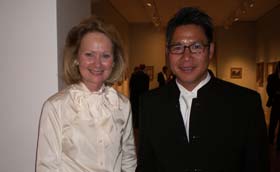 Wege Foundation Actively Fostering LEED-Certified Projects
Wege Foundation Actively Fostering LEED-Certified Projects
(Grand Rapids Business Journal’s front-page headline August 20, 2007)
With a color photograph of the new Grand Rapids Art Museum covering most of the front page, the Business Journal article by Pete Daly begins:
GRAND RAPIDS – There is a wave of green construction sweeping through West Michigan, and riding the crest of that wave is the new Grand Rapids Art Museum. The $60 million art museum is scheduled to open on Oct. 5. When it does, may be the first completely new art museum to open with a silver Leadership in energy and Environmental Design rating from the U.S. Green Building Council. It may even achieve a gold LEED rating eventually.
Celeste Adams, director of GRAM, explained in the article that it takes six months after construction for the LEED rating to come through. The news story explains that the highest LEED ratings are platinum, gold, and silver in that order. The next level is “LEED Certified” rating.
While LEED’s final word on GRAM is not yet known, the article makes it clear that one historical first is for sure. Daly writes: It will be the first and only art museum in the world in which the entire facility is Leadership in Energy and Environmental Design (LEED) certified.
Kulapat Yantrasast, from the Los Angeles firm Workshop Hakomori Yantrasast, was the architect for the new GRAM. He’s pictured here with Celeste Adams the night of the gala ball that opened GRAM in October 2007. They are standing in the entrance to the gallery named for the Wege Family.
In the article, Yantrasast notes that one green feature is the “capture and use of rainwater, funneled from the roof to a storage tank.” The recapture is to prevent the problem of water runoffs from parking lots and rooftops that cause major flooding problems as cities have so with little open ground to absorb excess water. Yantrasast noted that Grand Rapids has periodic sewage overflows into the Grand River when rainstorm water floods the treatment system.
The windowed GRAM uses natural light to save energy, but Yantrasast points out that this is a challenge in an art museum because ultra-violet rays can damage the artwork. For that reason, the roof skylights and some of the glass walls have layers of glass louvers that filter the sun light.
Celeste Adams expects that a quarter of a million people will visit the new 125,000 square-foot GRAM the first year.

